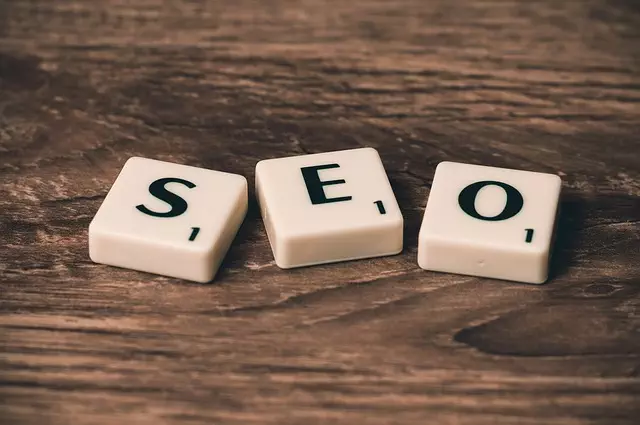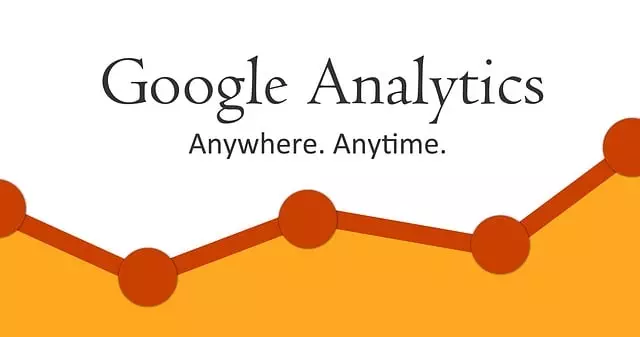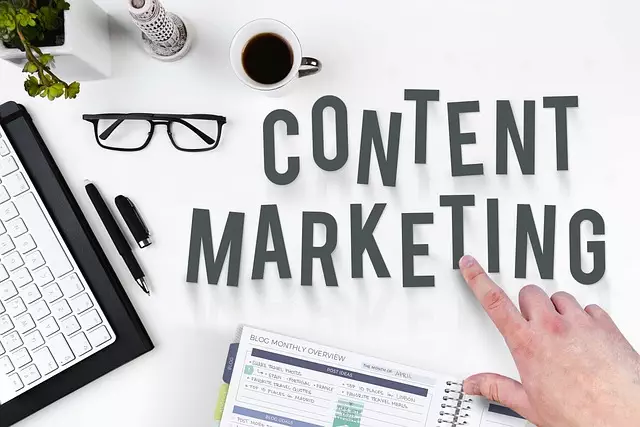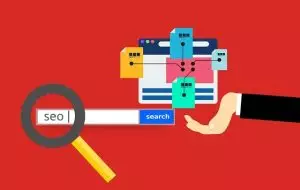Understanding on-page analytics is vital for SEO content optimization. Tools like Google Analytics provide key metrics (CTR, bounce rates, session duration, page views) to analyze user behavior and engagement. By tracking these data points, creators can identify underperforming pages and keywords, making informed decisions to enhance UX and improve search rankings, driving conversions. Essential metrics include organic traffic, bounce rate, pages per session, keyword rankings, CTRs, average session duration, and conversion rates. Monitoring these indicators allows data-driven optimizations for better SEO performance.
Tools like Google Analytics offer insights into user behavior, revealing crucial metrics like page views, bounce rates, and time spent on site, leading to higher engagement. Audit tools help identify technical issues, ensuring mobile usability and optimizing meta tags. SEO content optimization also hinges on compelling title tags and meta descriptions, balanced keyword use, intuitive navigation, and strategic content creation.
Technical SEO aspects like crawlability, semantic HTML markup, and structured data enhance both search engine indexing and user experience. Continuous A/B testing, based on metrics like CTRs and conversions, fuels ongoing SEO content optimization, tailoring content to audience preferences for better rankings and business growth.
“Unleash the power of on-page analytics for unparalleled SEO content optimization. This masterclass delves into the essentials of understanding and leveraging key metrics to boost website performance. From tracking critical SEO analysis indicators to optimizing title tags, meta descriptions, and site structure, you’ll discover actionable strategies. Learn how to craft compelling content with keyword integration techniques and address technical SEO considerations. Master A/B testing for continuous improvement, ensuring your online presence captivates audiences and ranks higher in search engine results.”
Understanding On-Page Analytics: The Foundation of SEO Content Optimization

Understanding on-page analytics is the bedrock upon which effective SEO content optimization stands. It involves scrutinizing key metrics within a webpage to comprehend user behavior, engagement, and overall performance. By leveraging tools like Google Analytics, we can gain insights into crucial elements such as click-through rates (CTR), bounce rates, average session duration, and page views per visit. These metrics provide a clear picture of how well your content resonates with visitors, enabling data-driven decisions to enhance user experience.
On-page analytics serves as the foundation for optimizing content strategy. For instance, identifying low-performing pages or underperforming keywords can guide content creation or revision efforts. By understanding what drives engagement and what falls flat, you can tailor your content to better meet user needs, thereby improving search engine rankings and ultimately driving conversions.
Key Metrics to Track for Comprehensive SEO Analysis

When conducting a comprehensive SEO analysis, tracking key metrics is essential for understanding and optimizing your website’s performance. Key metrics such as organic traffic, bounce rate, and pages per session provide insights into user engagement and overall site health. Organic traffic reveals how well your content ranks in search engine results, while bounce rate indicates the percentage of visitors who leave your site after viewing only one page—a high bounce rate may suggest that users aren’t finding what they’re looking for. Pages per session gives an idea of the average depth of user interaction on your site.
Additionally, tracking keywords’ rankings and click-through rates (CTRs) is vital for SEO content optimization. Keyword rankings show how well specific terms related to your niche are performing in search engines, while CTRs measure the effectiveness of your content in attracting clicks from search results. Other important metrics include average session duration, which reflects the quality of your content by indicating how long users spend interacting with it, and conversion rates, which highlight the success of your site’s objectives, be it sign-ups, purchases, or downloads.
Unlocking Website Performance: Tools for Effective On-Page Analytics

Unlocking Website Performance: Tools for Effective On-Page Analytics
In today’s digital era, understanding and optimizing on-page analytics is a game changer for any website aiming to excel in search engine optimization (SEO) content optimization. By delving into the intricacies of your site’s performance, you can identify areas of improvement that significantly enhance user experience and boost rankings. Essential tools like Google Analytics provide insights into traffic sources, user behavior, and key performance indicators (KPIs), enabling data-driven decisions. These platforms offer detailed reports on page views, bounce rates, and time spent on site, allowing you to optimize content for higher engagement.
Additionally, leveraging website audit tools can reveal technical issues hindering your site’s potential. These tools scan through code and content, pinpointing problems related to mobile usability, broken links, meta tags, and more. Addressing these issues ensures your website is not only optimized for search engines but also delivers a seamless experience across all devices, further solidifying its position in the competitive online landscape.
Optimizing Title Tags and Meta Descriptions: Maximizing Visibility

In the realm of SEO content optimization, Title Tags and Meta Descriptions are not just decorative elements—they’re powerful tools for maximizing online visibility. These on-page components serve as a website’s first impression to search engines and users alike. Crafting compelling and keyword-rich titles and descriptions can significantly improve click-through rates (CTRs), reducing bounce rates and enhancing user engagement.
Optimizing these elements involves a strategic balance. While incorporating relevant keywords is essential, it’s equally important to create content that reads naturally and appeals to the user’s intent. By aligning Title Tags and Meta Descriptions with search queries and offering value upfront, websites can attract more organic traffic, ultimately boosting their online presence and SEO performance.
Enhancing User Experience: The Role of Site Structure and Navigation

A well-structured site with intuitive navigation is essential for enhancing user experience, which in turn boosts SEO content optimization. When users can easily find what they’re looking for, they’re more likely to engage with your content, reducing bounce rates and increasing time spent on-site. A clear hierarchy and logical flow create a seamless journey, guiding visitors through relevant pages and resources.
This structural approach ensures that your content is accessible, improving user satisfaction and search engines’ ability to understand your site’s context. Efficient navigation also encourages deeper exploration, allowing users to discover new, related information. As a result, you’ll see improved internal linking patterns, better click-through rates, and ultimately, higher rankings in search engine results.
Crafting Compelling Content: Keyword Integration Strategies

Creating content that captivates and optimizes for search engines goes hand in hand. When crafting SEO Content Optimization, integrating keywords strategically is key. Start by identifying relevant keywords and phrases that your target audience uses when searching for information related to your topic. These keywords should be naturally woven into your content, avoiding the temptation to stuff them in for the sake of SEO.
Think about where these words can fit smoothly—in headings, subheadings, opening paragraphs, or even within multimedia elements. Ensure they appear in a context that makes sense to readers, enhancing readability without compromising authenticity. This approach not only aids search engine understanding but also engages your audience, fostering a better user experience.
Technical SEO Considerations: Ensuring Search Engine Crawlability

In the realm of Technical SEO, ensuring search engine crawlability is a cornerstone of effective on-page analytics optimization. This involves making your website’s structure and content accessible to search engine crawlers, facilitating efficient indexing and improved search rankings. A well-optimized site architecture, with logical sitemaps and clear navigation, allows these crawlers to navigate through your pages effortlessly. This process is vital for SEO Content Optimization, as it ensures that valuable content reaches search engines, increasing the likelihood of appearing in relevant searches.
Additionally, using semantic HTML markup, structured data, and proper heading hierarchies enhances crawlability. These techniques provide context to both search engine algorithms and users, making your website more user-friendly. By addressing these technical aspects, you create a seamless experience for visitors while empowering search engines to understand and rank your content accurately, ultimately boosting your online visibility.
Measuring Success: A/B Testing and Continuous Improvement

In the realm of on-page analytics, understanding success means constantly measuring and optimizing your content for maximum impact. A/B testing emerges as a powerful tool within this strategy, allowing marketers to compare two versions of a webpage or element to determine which performs better based on predefined metrics like click-through rates or conversion numbers. By segmenting audiences into groups that view slightly different variations of your page, you gain valuable insights into user preferences and behaviors.
This data-driven approach fosters continuous improvement in SEO content optimization. Each A/B test provides actionable feedback, guiding future adjustments to copy, design, or call-to-action buttons. Incorporating these learnings ensures your website evolves to better engage visitors, ultimately enhancing search engine rankings and driving business growth.
